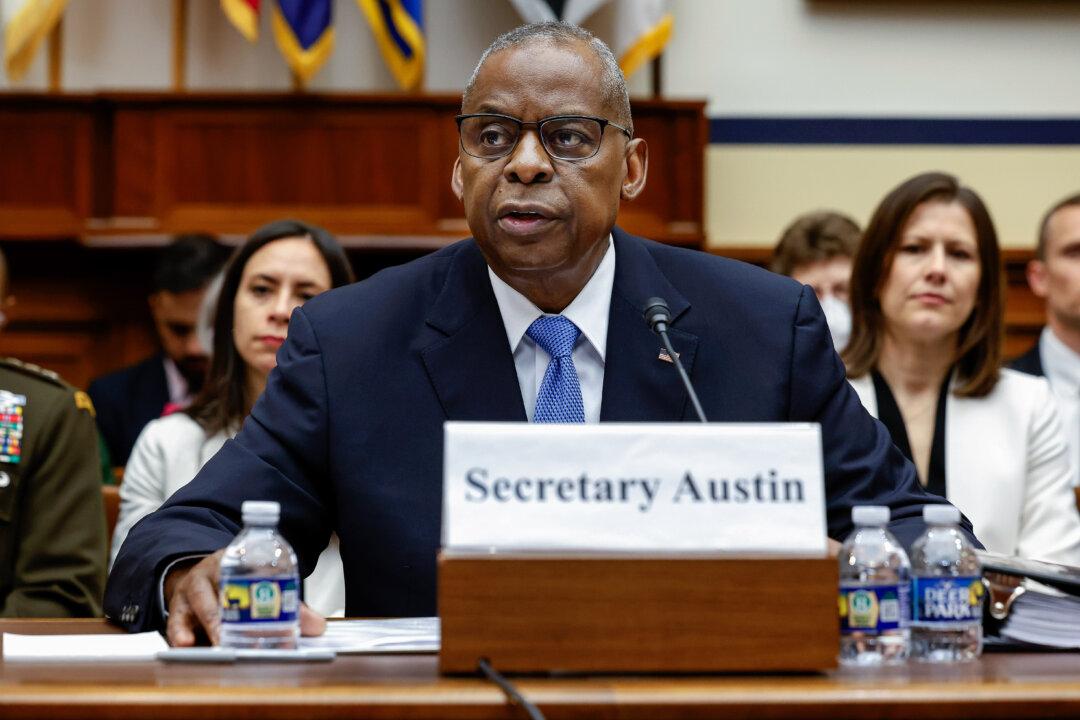Defense Secretary Lloyd Austin said U.S. service members constructing a maritime pier off the coast of Gaza could be attacked as they build the floating dock to ease access for humanitarian aid going into the famine-stricken territory.
Asked by House Armed Services Committee member Rep. Matt Gaetz (R-Fla.) on April 30 about the likelihood of shooting warfare between U.S. troops and Hamas terrorists, Mr. Austin replied, “It’s possible, yes.”
“So if someone from land, and Gaza, shoots at our service members who are on the $320 million pier that we’re building, you’re telling me our service members can shoot back?” Mr. Gaetz asked.
Mr. Austin told the hearing that all U.S. troops deployed in the area “typically ... carry guns” and affirmed that they all “have the right to return fire to protect themselves.”
The plan for the U.S. military to construct a pier in the Mediterranean Sea off the coast of Gaza was announced by President Joe Biden in his State of the Union address in March.
At Tuesday’s hearing, Mr. Gaetz reminded the Pentagon chief that President Biden told Americans the U.S. military wasn’t going to “have boots on the ground in Gaza.”
Mr. Austin then reaffirmed the president’s statement that the operation won’t involve U.S. troops on the ground.
“But you guys parse the distinction between—like when Americans think boots on the ground, they think Americans in harm’s way or engaged actively in a conflict,” Mr. Gaetz argued.
“You guys seem to be sort of saying that boots on a pier, connected to the ground, connected to service members shooting into Gaza doesn’t count as boots on the ground,” he added.
‘Dangerous Effort’
The floating dock is expected to become fully operational in early May and will be used to deliver critical humanitarian aid by sea to Gaza, Pentagon deputy press secretary Sabrina Singh said during a media gathering on April 29.The components of the Joint Logistics Over-the-Shore (JLOTS) include an approximately 1,800-foot-long causeway that will be attached to the shore, as well as a group of logistic support vessels and barges that will transport the aid from the pier to the causeway.
Once completed, officials anticipate it will initially facilitate the delivery of at least 90 trucks of humanitarian aid per day. Once the pier is fully operational, however, that number may jump to about 150 truckloads—or roughly 2,000,000 meals per day.
Still, Sen. Roger Wicker (R-Miss.), the top Republican on the Democrat-led Senate Armed Services Committee, and some other lawmakers have questioned whether the pier is a worthwhile endeavor, particularly given the risk that U.S. troops could become targets of Hamas terrorists.

The Mississippi Republican further criticized the initiative because the 1,000 U.S. service members helping to construct the pier are within range of Hamas’s rockets.
“For every day this mission continues, the price tag goes up and so does the level of risk for the 1,000 deployed troops within range of Hamas’ rockets,” he said.
Concerns of U.S. troops getting caught up in the Israel–Hamas war were underscored last week when an alleged “mortar attack” caused “minimal damage in the vicinity of the marshaling yard area” that will be used in conjunction with the pier.
The alleged attack happened on April 24 while U.S. ships involved in the construction of the pier were far away from shore, Pentagon spokesman Maj. Gen. Patrick Ryder said at a press conference on April 25.
No U.S. forces were “near mortar range,” Mr. Ryder said. However, a team of United Nations officials inspecting the site were forced to take shelter. No one was injured.
While no group took responsibility for the mortar strike, a Hamas spokesperson, Khalil al-Hayya, told The Associated Press that the terrorist group would resist any non-Palestinian force protecting the pier and consider it “an occupying force and aggression.”







